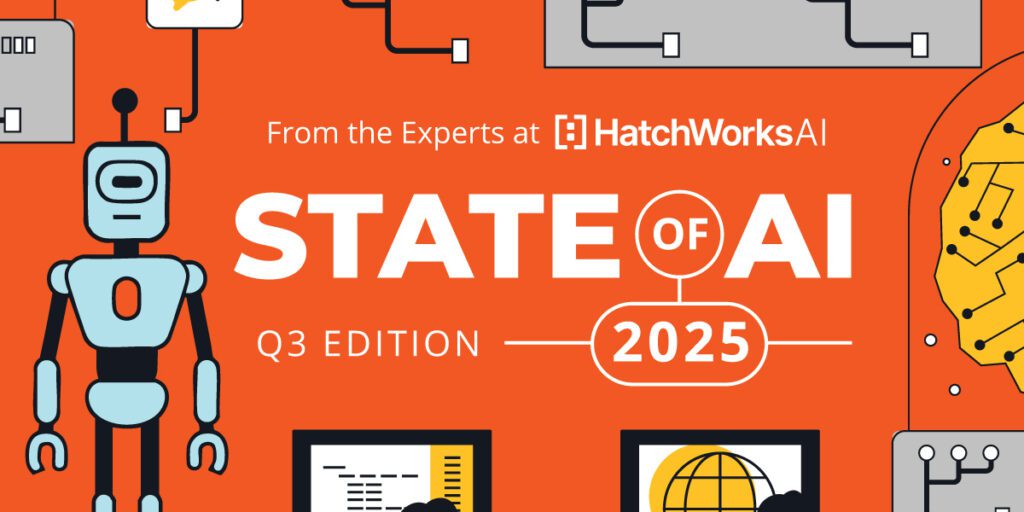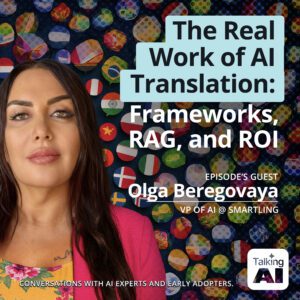
The update adds fresh observations drawn from recent data, real-world adoption patterns, and field work with enterprise teams.
CTO Omar Shanti is direct about what wins now. Stop chasing bigger models and invest in orchestration, governance, and culture.
Below is what is new in this update, plus how it connects to AI Governance, Enterprise Adoption, and Future Innovations.
What is new in Q3
1) Reality check on agents in production
General-purpose agents struggle with ambiguous tasks and inconsistent tool use. The report shifts the conversation from “let them run” to constrain, orchestrate, and verify before you scale. It highlights the now-famous “cupcake test” as a cautionary tale and points to patterns that improve reliability.
2) Design for AI, not just for people
“Invisible UX” is emerging, where content and interfaces are structured to be machine-parsable for agents and LLMs, not just readable by humans. The update also introduces GEO, AEO, and AIO as new optimization lenses as LLM-led search rises.
3) Context engineering beats prompt engineering
The biggest performance gains come from intentional context control and tighter feedback loops, not clever prompts. Teams are reorganizing around this reality.
4) New roles and AI-native pods
Faster build cycles compress weeks into hours, which breaks traditional team ratios. The report describes AI-native pods of 3–5 and “glue” roles that connect AI capability to business outcomes.
5) Coding tools: from arms race to access for everyone
The IDE and coding-assistant race is producing real usage at scale. Claude Code serves 115,000 developers and ~195 million lines per week, while platforms like AWS Kiro and Firebase Studio push agentic development with built-in governance.
6) Vibe coding for non-developers, with guardrails
Tools like Lovable have reached $100M ARR in eight months by opening software creation to non-engineers. The update shows where vibe coding shines and where controls are required to avoid fragile prototypes and security gaps.
7) Multimodal moment, especially video
Veo 3 is now shipping high-resolution, sound-synced video. Over 100 million videos have been generated, including about 6 million enterprise assets, and case studies show 10x timeline reductions for complex VFX.
8) The browser battleground
AI-first browsers shift discovery from links to answers, changing how content, analytics, and go-to-market need to work.
9) Models plateau, architectures improve
The takeaway for leaders is simple. Stop waiting for the next giant model. Gains now come from smarter integration, orchestration, and governance.
10) Governance and security move to the front
Enterprises are implementing gateways, identity, audits, red-teaming, and scoped permissions. Boards are now asking how to operate agentic systems safely and accountably.
Why this matters for enterprise AI leaders
If you are concerned about ROI, risk, and runway, the Q3 update speaks directly to those issues:- Execution gap Pilot failure rates are high, but the report notes a strategic edge when companies buy or partner. Success rates are cited at about 67% for purchased or partnered solutions vs 33% for internal builds. That is a material efficiency and cost-of-delay story.
- Delivery speed with controls Multimodal and AI-assisted IDEs compress timelines, while governance patterns keep risk in check. Expect order-of-magnitude cycle reductions when orchestration, identity, and policy controls are in place.
- Team design, not just tool choice Most teams already have access to tools. The bottleneck is structure, process, and culture. Rethinking roles and pods unlocks measurable throughput gains.
What you get when you download
- AI Governance
A practical view of policy direction and enterprise guardrails: AI gateways, agent identity, audits, and red-teaming checklists you can apply immediately. - Enterprise Adoption
Patterns for context engineering, AI-native pods, and workflow orchestration that move you from demo to production. - Future Innovations
Signals to watch in multimodal AI, AI-first browsing, and a pivot from bigger models to smarter architectures.
How HatchWorks AI helps
If you want measurable outcomes from AI software development, we pair AI strategy and roadmap with AI-powered product engineering and AI engineering team augmentation.
We focus on AI integration, data foundations, and agentic workflows so your investment translates into speed, cost savings, and real ROI.
Download the Q3 update to the State of AI 2025 report and see the full analysis.
Then contact HatchWorks AI to get your project started in as little as two weeks.
We will help you move from pilot to production with the right governance, the right team design, and a delivery plan you can measure.
About HatchWorks AI
HatchWorks AI is a digital innovation firm that builds AI-powered products and platforms to drive smarter business outcomes. With a multidisciplinary team of engineers, data scientists, UI/UX designers, and product strategists, HatchWorks AI transforms visionary ideas into enterprise-grade software solutions. Committed to delivering exceptional experiences, HatchWorks AI leverages Agile methodologies, cloud infrastructure, and cutting-edge technologies to help clients navigate digital disruption and maintain a competitive edge.
Empower Your Team with GenDD
The GenDD Training Workshop equips your engineers to implement Generative-Driven Development™ methodologies, boosting productivity and development speed.



